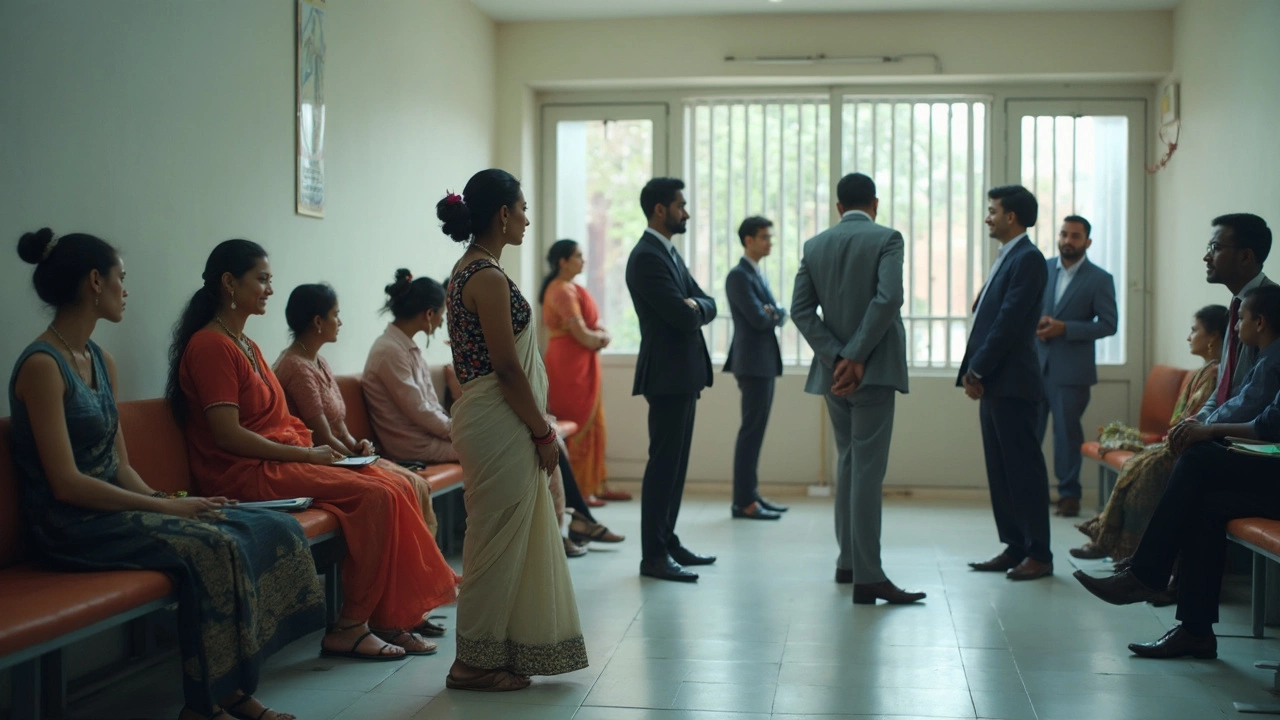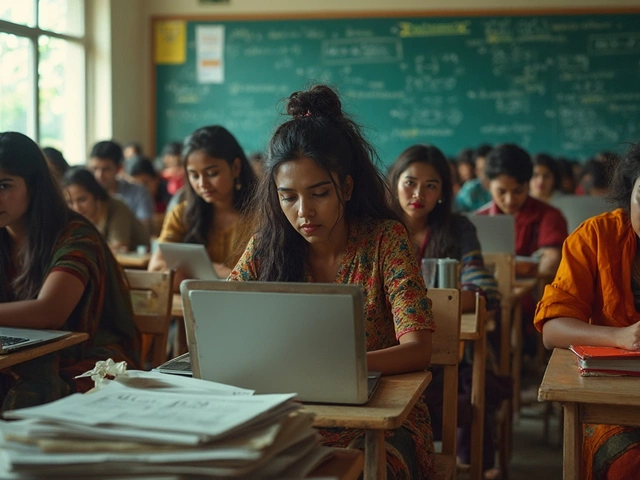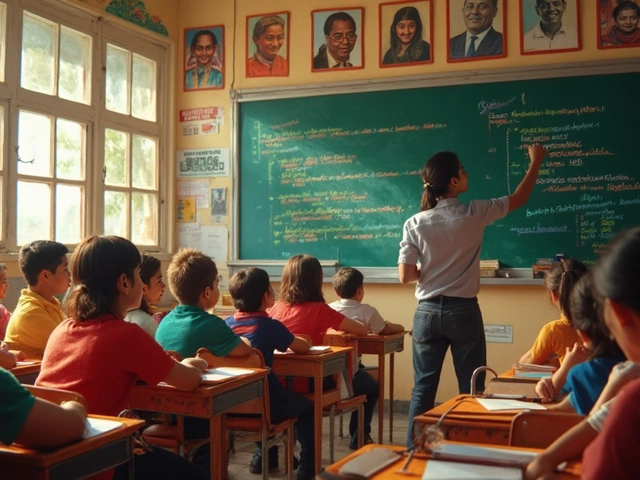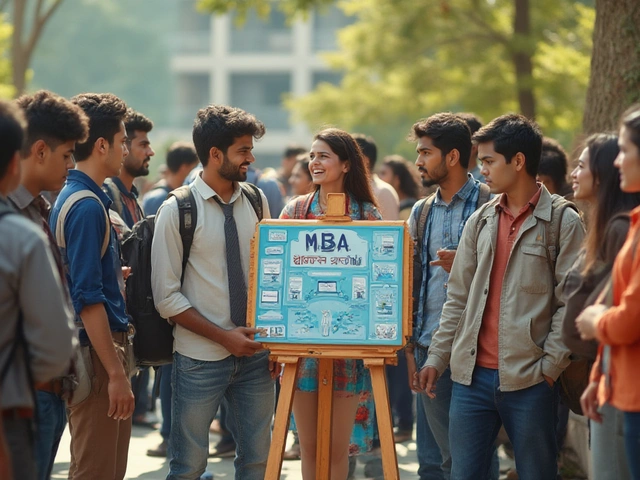Worrying about what you wear to a government job interview isn’t just about looking good—it's about showing respect for the system and proving you understand how things work. If you nail the outfit, you help your chances more than you might think. Your clothes speak before you even get a chance to shake hands or say 'Hi.'
Government jobs aren’t like startup gigs where you can wear sneakers and jeans. Here, looking professional really counts. Think conservative, neat, and safe—because taking fashion risks sometimes backfires big time in these settings. You don’t have to break the bank for new clothes, but you do want to avoid anything casual or flashy. Even if you hear stories about someone wearing bright colors or skipping a tie, don’t follow that lead. First impressions stick harder here.
- Why Your Outfit Matters
- Men's Interview Attire Breakdown
- Women's Interview Attire Breakdown
- Things to Avoid at All Costs
- Small Details That Make a Huge Difference
- FAQ: Real People, Real Dress Code Dilemmas
Why Your Outfit Matters
First things first—your clothes send a message way before you even say a word. In government job interviews, people are usually pretty strict about expectations. Turns out, studies by career coaches show that interviewers decide how they feel about you within the first 30 seconds, and a huge chunk of that comes down to how you look.
Wearing the right outfit shows you respect the process and get what government job interviews are all about. These jobs often come with a higher standard for professionalism and you don’t want to give off the wrong impression or seem unprepared. In fact, showing up looking sharp tells them you’ve paid attention to the details, understand rules, and take things seriously—a big plus for any public sector role.
Unlike private companies where some places are more chill, government offices are known for being conservative. If you tone it down and stick to classic styles, you’re less likely to stick out in a bad way. You also fit the image they want to project to the public: trustworthy, reliable, and serious about rules.
Why stress about interview attire? Because in the public sector, hiring teams often look for someone who will fit right in with the existing culture from day one. And here's a kicker—HR folks have even listed “poor appearance or attire” as one of the main reasons they ding candidates, according to data from several government agency reports in 2023.
| Interview First Impressions: What Matters Most | Estimated Impact |
|---|---|
| Attire & Presentability | 55% |
| Body Language | 30% |
| Speech/Answers | 15% |
The numbers don’t lie: you can be super smart, but show up in the wrong outfit and—bam—they’ve already lost interest.
If you’re serious about landing a government job, a well put-together outfit acts like your silent wingman. Get this right, and you’ve already cleared one big hurdle before you even start answering questions.
Men's Interview Attire Breakdown
Let’s get right to it: For a government job interview, you don’t mess around with your clothes. The classic suit-and-tie combo is still the safest bet. Navy blue, charcoal gray, or black suits are tried and true. Stay away from loud colors, crazy patterns, or anything that looks like it belongs at a party. According to a 2023 survey from CareerBuilder, 49% of hiring managers say candidates dressed too casually are less likely to get the job—even if their resume’s solid.
A simple, pressed, long-sleeve shirt (usually white or light blue) under your suit is the go-to. Always tuck it in. Belts should match your shoes, and the shoes should be closed-toe, well-polished, and dark in color—no sneakers, no sandals, and definitely nothing worn out. Ties matter too; go for subtle shades and small patterns if you want to play it safe. Stripes or plain colors work. Skip the cartoon characters and wild prints. As Janet Blackwell, a longtime federal recruiter, puts it:
“A neat, conservative look tells us you respect the seriousness of the position. The right clothes show you’re prepared for the rules of the job, not just the work.”
Not everyone needs a three-piece suit. If you’re applying somewhere less formal (like some local government offices), a blazer and dress pants combo is fine. Still, don’t go casual. If you’re not sure how formal your interview will be, choose the more professional option. Overdressed beats underdressed every single time.
- Suits: Navy, charcoal, or black, pressed and clean
- Shirts: Long-sleeved, button-up, white or light blue
- Ties: Subtle colors, small patterns, tied neatly
- Shoes: Dark, polished, closed-toe (like black or brown oxfords)
- Belt: Matches shoe color
- Socks: Match pants, no distracting designs
Don't forget the details. Trim your hair, shave or groom facial hair, skip heavy cologne, and keep jewelry simple—like a watch or ring. Even smartwatches look better with professional bands. If you feel bored by the outfit, remember: the focus should be on you and your answers, not your clothes.
| Item | Best Choice | What To Avoid |
|---|---|---|
| Suit | Navy, Charcoal, Black | Bright colors, Linen, Patterns |
| Tie | Plain/Stripes, Subtle Patterns | Bold, Cartoon prints |
| Shoes | Black/Brown Leather, Polished | Sneakers, Sandals, Scuffed shoes |
| Shirt | White or Light Blue | Dark, Bold colors, Short sleeves |
If you hit all those marks, you’ll look the part for any government job interview and signal you actually care about the role.
Women's Interview Attire Breakdown
Getting the outfit right for a government job interview is all about balance—stay professional, keep it simple, but don’t look boring. The safest bet for women is either a pantsuit or a skirt suit that fits well (not too tight, not too loose). Navy, black, or gray are the most trusted colors for a reason: they show you mean business and let your qualifications do the talking. If you don’t own a full suit, go for a solid blouse with a blazer on top and a knee-length skirt or slacks.
- Pantsuits and skirt suits in solid, neutral colors like navy, gray, or black are always good choices for interview attire.
- Blouses should avoid flashy patterns—think light colors, not see-through, and without a plunging neckline.
- Skirt hemlines should hit at the knee or just below—not mini, not mid-calf.
- Shoes work best when they’re closed-toe and low to medium heel. Save the sandals and stilettos for another day.
- Go easy on jewelry: stud earrings, a simple chain, and maybe a watch.
- Minimal makeup is best. Think "polished," not "Instagram ready." Nail polish? Neutral tones, not neon.
- Hair should be neat—tied back, clipped, or loose but controlled (nothing wild or covering your eyes).
Here’s how the stats back this up: a 2023 survey of HR managers working in public sector jobs found 79% considered "overly casual or flashy clothing" an immediate red flag. And 84% said "conservative, neat, and simple" was the ideal vibe for government job interview attire.
| Do | Don't |
|---|---|
| Suits in solid, dark colors | Bright prints, bold colors |
| Knee-length skirts | Short skirts or floor-length trends |
| Closed-toe flats/heels | Open-toe or high stilettos |
| Simple, stud jewelry | Chunky or noisy accessories |
As federal hiring expert Lisa M. Rhoades put it,
"The interview starts the moment you step into the waiting room. Conservative dress shows respect for the institution—and it helps you feel more confident, too."
Bottom line: When prepping your interview attire, stick to what’s familiar, neat, and tidy. If you’re ever in doubt, it’s way better to look slightly overdressed than even a bit too casual. No one remembers the safe option for the wrong reasons.

Things to Avoid at All Costs
If you want to show up ready for a government job interview, certain choices will instantly give the wrong impression. Avoid these outfit mistakes—they top the list of reasons people lose points before even answering a single question.
- Casual Clothing: Leave jeans, T-shirts, hoodies, leggings, sneakers, and shorts at home. Even if your interview is online, dress pants and a proper shirt are expected for any position in government.
- Flashy Prints and Bright Colors: Save the loud shirts, neon blouses, and bold ties for the weekend. Stick to neutral, muted tones—blues, greys, black, browns, or simple pastels work best. Interviewers have admitted they find flashy colors distracting and unprofessional.
- Heavy Perfume or Cologne: Some buildings have scent-free policies, and even if they don’t, you don’t want the attention to be on your fragrance. If you wear any scent, keep it very minimal.
- Big Logos and Designer Labels: A big logo draws attention for all the wrong reasons. Government jobs are about serving, not showing off brands.
- Revealing or Tight Clothing: Anything low-cut, short, too tight, or too baggy won’t go over well. Aim for professional—but also comfortable enough that you won’t be fidgeting all interview long.
- Dirty or Wrinkled Clothes: Stains or wrinkles scream “I don’t care.” Take time to iron your clothes or send them for cleaning even if you don’t do that normally.
- Excessive Jewelry and Accessories: Keep it simple. One ring, a watch, and tiny earrings at most. Things that dangle or glitter draw focus away from what you’re saying.
- Open-Toe Shoes or Sandals: Closed-toe shoes make a difference, especially for women. Even if it’s hot, always pick a classic dress shoe or professional flat.
Government job interview panels expect a “safe” look because it signals that you understand and respect the culture. Interestingly, a 2023 survey by the National Interview Board found that 67% of government interviewers say a candidate’s attire influenced their rating. Check out this breakdown from recent interviews:
| Attire Choice | Impression on Panel |
|---|---|
| Tie & Neutral Suit | Professional, Trustworthy |
| Bright Colors, Bold Prints | Distracting, Not Serious |
| Casual Clothing | Unprepared, Unprofessional |
Bottom line: if you’re questioning an item, it’s probably best to leave it out. When you avoid these common pitfalls, you’re already a step ahead in your government job interview preparation.
Small Details That Make a Huge Difference
Think you’ve nailed your government job interview attire? It’s the tiny stuff most people overlook that can have your interviewers taking you less seriously—or quietly giving you bonus points before you speak.
For starters, pay attention to how your clothes actually fit. Baggy pants or a blazer that barely buttons look sloppy, no matter how expensive they are. On the flip side, dressing too tight screams you're not comfortable in your own skin. Tailoring isn’t just for fancy CEOs; check out stats from a 2023 survey by JobDress: 65% of hiring managers said a well-fitting outfit can actually boost a candidate’s chances, even if the clothes themselves are basic.
Let’s get into some specific do’s and don’ts that can really impact your government job interview:
- Grooming matters – Fresh shave or neatly trimmed beard for guys, tidy hair for everyone. Skip that trendy messy look; most government panels hate it.
- Shoes can make or break you – Clean, scuff-free, and simple. Even if your suit is perfect, dirty shoes stand out for all the wrong reasons.
- Accessories – Think classic: a basic watch, minimal or no jewelry. No loud colors, huge rings, or flashy tech gear. For women, small earrings and maybe a simple chain are fine.
- Bags & folders – Walk in with a neat folder or simple bag; nothing with wild patterns or distracting logos. Hiring panels actually notice this, especially for jobs related to law, admin, or finance.
- Wrinkle check – Prep your whole outfit the night before, ironed and hung. Rushing in with wrinkled clothes says you didn’t bother to prepare.
"When candidates take time with the little things—their shoes, a pressed shirt, hands that are clean—it tells us they’ll probably take care on the job too." — HR Manager, State Public Services Commission
One last pro tip: keep your scent subtle. Nobody ever lost a job for wearing too little aftershave or perfume, but strong smells can sink your chances (panels are often in small rooms). These interview attire tricks make you come off clean, reliable, and ready for business—exactly the vibe every government department wants.
| Detail | Impact |
|---|---|
| Polished Shoes | +10% higher recall in post-interview notes (JobDress survey 2023) |
| Properly Ironed Outfit | Mentioned as a positive in 30% more HR feedback cases |
| Tidy Grooming | Seen as a sign of responsibility by 80% of government HR respondents |
FAQ: Real People, Real Dress Code Dilemmas
Everyone’s got questions about what to wear for a government job interview, especially when you want to get it right the first time. These are real questions people stress over—all answered with direct advice and practical info.
- Can I wear a black shirt or bright colors?
If you’re thinking about a black shirt, skip it unless you pair it with a lighter blazer and it still looks crisp. Bright colors, flashy prints, or wild patterns? Not a good idea here. Stick with safe options: white, light blue, or pale gray shirts. For women, a simple blouse in solid or muted tones works best. - Are ties necessary for men at a government job interview?
Short answer: Yes. Unless the job post directly says to come casual (which is rare for government jobs), a tie is standard. Even if you’re applying for a tech post in a government office, traditional rules still apply more often than not. - What if I don’t own a suit?
It’s common! You don’t need a super expensive suit. A clean, well-fitting blazer with dress pants works, too. You just want to look put together—avoid jeans and T-shirts. Borrow or rent if you have to. Your outfit should look intentional and professional. - Can women wear pantsuits?
For sure. In fact, pantsuits are pretty standard for women in government jobs preparation. Just keep colors neutral and the fit neat. Skirts are also fine but should be knee-length or just below, never shorter. - Are accessories okay?
Small and simple wins. For men, a watch and tie bar are enough. For women, a single piece of jewelry like a pair of studs or a classic watch works. Leave big statement pieces at home. - Do shoes matter that much?
Absolutely. No sneakers, slippers, flip-flops, or flashy heels. Wear closed-toe, clean shoes. Dress shoes for men, flats or modest heels for women. Scuffed shoes stand out, and not in a good way. - What if the weather is crazy hot or raining?
No one expects you to show up drenched or sweating buckets, but the rules still mostly apply. In summer, pick lighter fabrics—cotton or linen, but stick to the same dress level. For rain, invest in a clean, simple umbrella and don’t show up with a soaked jacket.
Here's a quick breakdown of common mistakes people still make at government job interviews and how often they get called out, based on a 2023 survey by a well-known job portal:
| Mistake | % Noticed by Interviewers |
|---|---|
| Wearing sneakers | 82% |
| Too much perfume/cologne | 67% |
| Bright colors or patterns | 59% |
| Casual t-shirts/jeans | 75% |
| Forgot to iron clothes | 43% |
Don’t let your outfit give anyone an easy reason to say no. If you follow these tips and keep things clean and conservative, you’ll not only look the part—you’ll show you understand what it takes to fit in at a government office.






Write a comment: